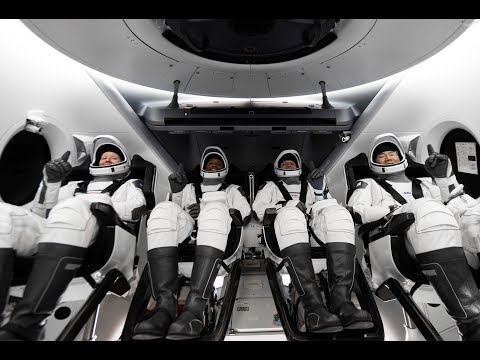The journey of SpaceX’s Starship prototype has been an eventful one. The previous attempts with SN8 and SN9 ended with explosive results during their landing attempts. However, SpaceX learned valuable lessons from these unsuccessful tries, refining their approach to ensure the success of SN10.
With its gleaming stainless steel exterior and towering height of 150 feet (50 meters), Starship SN10 stood proudly at SpaceX’s South Texas launch site in Boca Chica. Despite its bulky appearance, this spacecraft possesses remarkable capabilities that could revolutionize not only how we explore space but also how we travel on Earth.
On that fateful day, as the clock struck noon, SpaceX fired up Starship SN10’s three Raptor engines—and with a thunderous roar—the spacecraft gracefully lifted off from the launch pad. The excitement was palpable as spectators around the world watched live streams, eagerly awaiting every milestone of this historic mission.
SN10 soared majestically through the atmosphere—reaching an altitude of approximately six miles (10 kilometers). It showcased its maneuvering abilities by performing sophisticated mid-air acrobatics and executing complex flips it had been designed to perform. This test flight demonstrated Starship’s versatility in atmospheric control—an essential aspect for future interplanetary missions.
As if a ballet dancer floating back to Earth, Starship SN10 slowly descended towards the designated landing zone. It utilized its two flaps and single thruster to maneuver with precision and poise during reentry—a spectacle that seemed almost surreal. As it approached the ground vertically, landing legs extended beneath it to provide stability during touchdown.
The last moments were incredibly nerve-wracking, as everyone held their breath for a successful landing. And despite a slightly bumpy touchdown, Starship SN10 nailed it! Time seemed to stand still as cheers and applause resonated among the SpaceX team, marking a monumental achievement for the company and the future of space travel.
Through this triumph, SpaceX has once again pushed boundaries and demonstrated its unwavering commitment to revolutionizing spaceflight. Elon Musk’s vision of creating an accessible and sustainable starship capable of carrying humans to Mars and other distant destinations is becoming closer to reality.
However, it is important to acknowledge that we are merely at the beginning stages of this revolutionary journey. The SpaceX team will undoubtedly learn more with each prototype launch, further iterating and refining the Starship design until it becomes the reliable workhorse necessary to take us beyond Earth’s orbit.
The successful SN10 mission brings optimism for what lies ahead—more test flights, improvements in technology, and ultimately redefining our place in the cosmos. The dream of venturing beyond our planet no longer seems distant or far-fetched but rather like an attainable reality on the horizon.
With each milestone accomplished by SpaceX and its Starship program, our imaginations soar alongside those mighty rockets. A future where humans become an interplanetary species is inching closer by every liftoff—where we will explore new worlds, colonize other planets, and unlock the mysteries of the universe.
As we celebrate this remarkable achievement by Starship SN10, let us remain excited for what awaits us in the next chapters of our cosmic adventure. With each successful landing—like SN10’s historic day—we see humanity’s aspirations leaping further into infinity.





